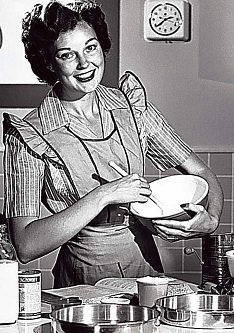Katja Rowell's Blog, page 8
January 17, 2013
Stupid stuff “experts” say #6: “Your child can go up to three weeks without food and be fine.”
This is also under the theme of “Just starve him out,” or “Only serve rice and beans until he eats them: breakfast, lunch and dinner.”
This advice was to a client from her pediatrician. The pediatrician actually said this to a mother. She also said, “No child will starve himself,” a line that I read not infrequently in “expert” articles on picky eating.
What do you think? Aside from being medically dangerous, untrue, and clueless, (and yes, a small percentage of children do refuse to eat to the point of needing medical intervention), starvation itself can trigger eating disorders in genetically predisposed individuals. But, aside from all that…
How would this FEEL as a parent? If any of you have tried the “starve them out” approach, even for a few days, how does it feel? How can this pediatrician recommend an intervention that is so agonizing for parents to follow? Where is the empathy for the child, and the parent?
I asked this mother how she thought it would feel, and advised her to trust her gut. I “gave her permission” to follow her instincts to seek a provider who would be more of an informed partner as they work on their son’s eating. I also did inform her that from my experience, and well known in the research literature, there are some children who refuse to eat, and that three weeks without oral intake is dangerous, not “fine.”
*When I have done trainings for pediatrics and FP residents, they do not learn about feeding disorders, they don’t even learn about normal development in terms of eating or basic intervention for common feeding challenges. This is not okay and has to change. Considering one in three parents will ask for help from the child’s doctor with feeding, this simply has to change.
January 15, 2013
Feeding tip for sensory or selective eaters: Where to place food so not to trigger immediate refusal
When I went to the home of a nine-month old who was “refusing to drink,” I saw a lovely girl: smiling, bright, and interactive. While sitting in her high chair, the mom repeatedly tried to hand the girl the sippy-cup—putting it in front of her, trying to put it in her hand. The little girl batted it away, pushed, and cried, getting increasingly upset with every attempt. We sat back, and I suggested mom put the cup just within reach at the far side of the high chair tray and then chat or look away and perhaps sit back and take a sip of her own tea. Within a minute, the little girl reached out, grabbed the cup and began drinking.
Another home visit with a preschool girl provided a similar learning opportunity. The pre-plated foods were placed in front of the child. She was less adamant about refusal, but in a matter-of-fact way she pushed the plates and bowls away, or leaned over them to get at the crackers. When we changed tactics and placed the bowl of the new food within reach but not in front of the child and ignored the food, she became more curious. She watched raptly as the mom and I popped bites of blueberries into our mouths (step one in the process of learning to like new foods). When a piece was placed on the table within reach, she reached out, handled and inspected the food for a time, and put it in her mouth before spitting it out. (Remember, that’s a win, not proof she doesn’t like blueberries!)
feeding tip: avoid placing foods directly in front of your child, or repeatedly hold a loaded fork or piece of food at your child’s mouth
When you put a plate, or bowl, or pieces of food repeatedly right in front of the child, particularly one who has been pressured, or is more sensitive to help from others, it can feel pushy to the child, and her immediate reflex is to physically push it away and to resist. She resents the physical intrusion into her space. The conflict increases stress, which is known to decrease appetite and makes children more likely to rely on safe and familiar foods.
Try this instead. Get all the offering ready. Sit down with your child. Eat or drink with him if you can. Put the bowl, or food right on the table, within reach, but perhaps to the side, or let the older child help herself. Serve yourself. Then wait. Enjoy your food. And wait. Resist the urge to put it right in front of him, or to hold pieces up to his mouth in the hopes he will take it this time.
What happens? Have any of you experimented with this, or seen this phenomenon in action? If your child consistently refuses what you put in front of him, but happily eats the same food off your plate, could this dynamic be part of the issue?
January 9, 2013
My cheerleader let me down. We’re heading to B-Dubs (read on…)
Husband: “No.”
 This is a first. Usually, when for whatever reason I don’t want to cook, a few words of encouragement from Hubby and I’m in the mood (so to speak). Almost always he prefers what I cook to restaurant food.
This is a first. Usually, when for whatever reason I don’t want to cook, a few words of encouragement from Hubby and I’m in the mood (so to speak). Almost always he prefers what I cook to restaurant food.
Sometimes when I don’t feel like cooking, it’s having just one other person say they get it, it can be boring, and ‘thank you,’ and I’m happy to cook. I try not to eat out too much because it’s a hassle, expensive and the food is usually not great. But, sometimes I just don’t want to cook, and even though this morning I was looking forward to my deconstructed won ton dinner, at 4:45 on the local ice-rink, I wanted Wings.
So, at 6:15 we are meeting at B-Dubs (I’ve only been there once, and I looked up their menu online and saw it’s called B-Dubs…) I think it’s HI-larious (and emblematic of what is so wrong with how we approach food in this culture) that they only serve fat-free Ranch, so we may have to bring our own dressing  M doesn’t like fried chicken or gooey mac n cheese, so she would probably have liked the won-tons, but I think at 7, it’s time to introduce her to the chicken wing, eh?
M doesn’t like fried chicken or gooey mac n cheese, so she would probably have liked the won-tons, but I think at 7, it’s time to introduce her to the chicken wing, eh?
Yay, and the won-tons can wait until tomorrow! What helps you get over that “I don’t want to cook” hurdle, and can you be happy and not feel guilty when you decide to eat out? Oh, and don’t forget, eating out counts as a family meal too!
January 8, 2013
Temperament clues: Why the ‘no thank you bite’ works for some and not others
 Over the winter break, I went sledding with my family. I watched an exasperated father waiting while his young son tried to climb up the slippery steps, sliding down repeatedly. Every time the dad tried to lend a hand, or a suggestion, the boy shrieked, “I do it!!!!!!!.” swatting the father away. While folks waited somewhat patiently behind him, we watched this happen over and over; both boy and father becoming increasingly upset until the dad finally picked him up and trotted up the hill. At the top, it took some time for them both to calm down. Meanwhile just behind us, a boy of about the same age held his mother’s hand with a big smile as she helped him up the steps. Her suggestion that he hold on to the railing was met with instant compliance as he grabbed on, more secure in his footing.
Over the winter break, I went sledding with my family. I watched an exasperated father waiting while his young son tried to climb up the slippery steps, sliding down repeatedly. Every time the dad tried to lend a hand, or a suggestion, the boy shrieked, “I do it!!!!!!!.” swatting the father away. While folks waited somewhat patiently behind him, we watched this happen over and over; both boy and father becoming increasingly upset until the dad finally picked him up and trotted up the hill. At the top, it took some time for them both to calm down. Meanwhile just behind us, a boy of about the same age held his mother’s hand with a big smile as she helped him up the steps. Her suggestion that he hold on to the railing was met with instant compliance as he grabbed on, more secure in his footing.
You can imagine how this relates to feeding children. Those temperament traits that delight and frustrate don’t simply disappear when children sit down at the family table. In fact, family meals, with the expectation of some sitting and cooperating and not spoiling the meal for others, often amplifies behavioral struggles. Add on the pressure many parents feel to get protein, rainbows, and fruits and veggies into kids while keeping out high-fructose corn-syrup, food dyes, fat, salt, sugar, and processed foods, and it’s a recipe for turmoil.
So when you read a book that recommends a “no thank you bite” or some mommy blogger swears her kids love kale chips because she makes them try a little of everything, remember that temperament plays a huge role. While one child may happily comply with the no-thank-you bite and may even say, “Wow, you’re right, I do like Kohlrabi!” that same ‘one bite’ may result in a 90 minute stand-off for another child. So if dinner feels like “hostage negotiating” (as one workshop attendee said) most nights, take heart. It doesn’t have to be so hard. I have many clients with three kids, two eat just fine, and the third for whatever reason just doesn’t like food, won’t eat, never seems hungry, is ready to fight to not have to taste that piece of whatever that he may have eaten happily last week…
The Division of Responsibility takes the temperament piece off the table. You don’t have to fight or force. In fact, the less you do, the better your child will eat. You can feed all your kids the same way— your adventurous or cautious eater, your stocky or lean child, your adopted and biological children…
I think my lucky stars on a regular basis that I don’t get into food fights with my kiddo: the girl who would throw markers if I tried to help her draw something (even if she asked for my help) or pushed me away when I tried to help her on her ice-skates that first time, or who bristles at any suggestion when she is putting together a puzzle or some other craft.
What do you think? Do you notice certain traits that carry over into feeding?
January 1, 2013
Happy New Year: Resolutions?
Last night M wanted a “buffet” to celebrate the end of 2012. I asked what she meant, “You know, little bowls with the food in it.” Since we serve family-style, this is pretty much what we do every night, so I asked her to elaborate.
“You know, where you stand up and get lots of little things and then eat somewhere else.”
I suggested lots of little, easy things, but she begged for Turkey Curry. I decided to let her run the menu (I added the scallops) and here is what we came up with… Lettuce for the curry wraps, cherry tomatoes, boiled beets with EVOO and Balsamic Crema (a Christmas gift, basically reduced balsamic in a bottle, who knew?) shallots and cilantro for the curry, shrimp (on skewers no less) with cocktail sauce, pan-seared scallops (M did not like these) and little cupcakes from Whole Foods. I ran through the frozen food section looking for some kind of app I could throw in the oven, but none of it grabbed our attention. Anyway, we set it up on the counter and ate at a nicely decorated table. (And we’ll have turkey curry left-overs on the 2nd…)
[image error]
And M helped a lot. Usually she helps for about five minutes and then is off to play. This time she put in serious effort for about 40 minutes… Having kids help plan a menu and have some control and ownership means they will be more likely to help, and get that pleasant exposure to the food, and maybe try it. (Especially for children with sensory issues or who have had traumatic experiences around foods, smelling, passing, and handling foods helps them get comfortable with them long before they may be willing to taste them, but it helps immensely. They may be more willing to help with food prep than participate in the more structured therapeutic play with food, like painting with foods etc.) M was grossed out by the smell of the scallops, but she patted them dry and even laid them in the butter. She tried the teensiest bit before spitting it into the paper napkin with no fuss. (Feeding tip #2, always have a paper napkin on hand. Kids are more likely to put something in their mouths if they can spit it out.)
Happy New Year!
If you’re stuck with feeding, now may be a time to feel energized, learn more, perhaps work on getting everyone to the table for a meal, or planning to include one of your old favorites with dinner, even if your child won’t eat it right away! My resolutions:
Get really good at cooking roasts (so far I tend to overcook them, and my $40 thermometer seems no better than the cheap ones. I am thinking it’s off by about 10 degrees as it still was at 150 when the pork was totally overcooked…)
Find more oven sides and recipes so I can fully enjoy my new double-oven. Yay!
Cook a tater-tot hot dish in honor of my new home-state of Minnesota.
Try a few more new recipes. Don’t be afraid to cook something new, even if I think M won’t like it.
Let M do more food prep (including cutting) and try not to freak out. (She burned her finger trying to flip pork chops with tongs. Live and learn, but it’s hard to let them learn that way…)
Do better planning so I don’t throw out as much food. (Use those green beans before they get slimy!)
That’s about all I can come up with for now. Do you have any resolutions?
December 18, 2012
Crazy Mealtime Theater: saying ‘no’ to the oatmeal tantrum
 I am fortunate to have a very competent eater. She self-regulates and enjoys a variety of foods, but not all by any means, and that’s okay. At just 7, we’ve been at this Trust Model for more than five years. And yet, we still on occasion have scenes like this…
I am fortunate to have a very competent eater. She self-regulates and enjoys a variety of foods, but not all by any means, and that’s okay. At just 7, we’ve been at this Trust Model for more than five years. And yet, we still on occasion have scenes like this…
Asked M this morning what she wanted for breakfast. She said, “I don’t know,” so I got my toast ready, and a few boxes of cereal on the table, milk, bananas, clementines. Our toast was hot, so hubby and I start buttering and there were options at the table that she usually would eat.
M: I want oatmeal
Me: I’m sorry honey, it’s too late for oatmeal. I asked earlier what you wanted. (I could have not said that last part…)
M: I didn’t know I wanted it then!! AAHHHHHH!!!!
Cue the screaming, shouting tantrum that she kindly took to her bedroom. (She knows the table is a tantrum-free zone.)
Hubby and I are looking at each other. It’s been a while since a full meltdown, and it seemed like she needed to get something out. (Remember, every child is different, and you know your child best, so perhaps stepping in earlier or differently works for your child.) A few minutes later she emerges wiping her tears, and I scoot back to offer a cuddle. She sits on my lap.
M: I’m hungry, can’t I please have oatmeal? I’m sorry I screamed.
And here is where I almost cave. I think, “It’s just oatmeal,” I look to my husband, with imploring eyes, and he mouths, “Don’t you dare.” (Make her oatmeal that is.) Because we know better, because that would be caving in to her show of force, because that would reinforce that tantrums get her what she wants. Because that would be letting her take over my job of putting food out and having her choose, because that’s catering to her demands. (This is nuanced if you’re new at it as I had given her choices initially, and had she requested earlier it would have been fine. One good rule of thumb is if you have to get up from your own meal to prepare something, it’s crossing the line and catering…)
And I knew he was right, but it was hard. Hard not to get up and make her oatmeal because it feels loving and nurturing, and I empathize in these moments with my clients who have very small children, or children they adopted who have experienced real malnutrition, and how all-consuming that urge is to feed and nourish and please and love with food, and how hard this Divisio0n of Responsibility stuff can be.
Me: “I’m sorry you’re disappointed, Honey, we can have oatmeal tomorrow. How about some Rice Krispies with sugar.”
M: “Lots of sugar?”
Me: “We’ll have it how we always have it.” (With sugar on top.)
And that was that. She sat and calmly enjoyed her cereal and milk and a little banana. Until she got a little rough with the cat and had to clean the cat litter, then it was tantrum-city again.
See a few past installments of CMT. You’ll notice that most happen around breakfast, traditionally our most challenging meal of the day. And yes, I think it’s okay at breakfast to let kids have more choice if you are all eating different things routinely (this also depends on the child’s age and skill-level with eating.) We seem to rotate between toast, cereal, oatmeal, smoothies, boiled eggs (whites only), left-overs, biscuits—all served with some kind of fruit (not always eaten) and milk…
smoothies
picky eating
fickle tastes
more on kids and tantrums around food
What have your experiences been? Mine are generally if I wait out the tantrum, meet the emotional needs but hold firm, that soon enough it blows over. This is often what my clients share as well…
December 13, 2012
cheese that stands, doing things differently from our moms, keeping it real…
 I wasn’t sure what to make of the new packaging with the shredded cheese that stands on it’s own until Taco Night, when I was happy not to have one more bowl to wash… Turns out I like the cheese that stands alone…
I wasn’t sure what to make of the new packaging with the shredded cheese that stands on it’s own until Taco Night, when I was happy not to have one more bowl to wash… Turns out I like the cheese that stands alone…
Which made me think about how much I love our informal meals, and how I will take anything that helps me get meals on the table. (Within reason. I have yet to find a steam-in-the-bag veggie that seems as good as prepping it myself. But that line is different for every family cook.) I think about how my mother never let a deli-meat hit the table still in its wrapper, or how an older home-ec professional directing a photo shoot I was working on freaked out when I put a ketchup bottle on the table and promptly removed it. (“I was taught never to have a ketchup bottle on the table!”)
I just can’t do it. I can’t make every meal pretty. I can’t be bothered to put ketchup in a bowl with a little spoon, or remove sliced turkey and cheese from the wrappers, only to have to put them back at the end of the meal. If I had to make it perfect, I wouldn’t do it at all—like one dad who turned his back on family meals because his only frame of reference was the formal, quiet family affairs he grew up with.
I still have the pretty white table cloth for special occasions, but I don’t iron it, and last Easter, I just pushed a bunch of stuff to one side of the table, and put the table cloth right over it… Still special, without all the fuss  Mom, if you are reading this, forgive me. I’m happy, and that’s all what matters, right?
Mom, if you are reading this, forgive me. I’m happy, and that’s all what matters, right?
Times have changed. We are less formal, I don’t iron my underpants—or much of anything really—and I’m good with that. But I am following one very important tradition that may seem old-fashioned. Like my mother, I cook (though I eat out and rely on convenience foods more than she did—which was pretty much never) and I sit and enjoy delicious food with my family almost every night.
What traditions have you held on to, what have you improved on, and what have you let go?
Speaking of family meals and tradition, if you want to watch a fun special on food and family where I cook my mom’s German red cabbage and manage not to lop off the tip of my finger, check out this link for your local PBS showing of the Heirloom Meals Christmas Special.
December 10, 2012
Improvising, and using up odds and ends
We are having our first snow storm in about 18 months, and alas we left M’s boots at school Friday afternoon. So, we came up with these for some playtime in the snow: tennis shoes, her too-big snow-pants (‘cuz she has to wear them for two years) and some left-over packing tape. They were a little slick with the tape around the bottom in the front, but the back was still nubbly enough so she wasn’t falling over all the time. Worked for about 45 minutes to keep her feet dry 
Which of course, reminds me of cooking and food (doesn’t everything somehow relate?) I was looking through our fridge and saw some lonely things in the deli drawer: 1/4 cup of shredded mixed cheese, 2 slices of cheddar cheese, along with a few sprouted potatoes and some beef broth in a carton… So, I made mini potato gratins, one of our faves. I improvised using the shredded cheese in the middle, the slices on top, and I used up the small amount of beef broth and the evaporated milk to make it a little more savory. Total liquid is about the same. Feels good to use up some odds and ends and make something yummy! Love those McGyver moments, and cooking for a family gives lots of opportunities for that! (I find that I throw out food more often than I like, so I am trying to look for more opportunities to use up odds and ends…)
This is a great recipe that kids can help assemble or cut as they get older.
Here is the recipe again!
More calcium Potato Gratin minis (adapted from Melissa d’Arabian)
prep time 10-15 (with a preschool helper) cooking time 40
Ingredients
* Vegetable spray
* 2 large potatoes or 4-5 smaller ones, roughly peeled and thinly sliced
* 1/2 cup grated cheese (I’ve done Jarlsberg and cheddar- any mildish cheese should work…)
* 2 green onions, finely chopped (I use the softer parts of a small leek which I usually have in the fridge)
* Salt and freshly ground pepper
* evaporated milk (about half a can)
Directions
Preheat oven to 375 degrees F.
Spray 6 muffin tins with vegetable spray. Layer potato slices, cheese, and onions (leeks) into each muffin cup. (I do potato, leeks, cheese, potato, cheese on top…) Season with salt and pepper and pour enough evaporated milk to fill the muffin tin half way. Cover loosely with foil (I spray foil with veggie oil so the foil doesn’t stick and pull off the cheese) and bake for 30 to 40 minutes. Scoop them onto plate and serve. We ALL love these!!!
December 5, 2012
Feeding children differently isn’t fair. They will notice.
Some of the parents who have struggled the most that I have worked with have one child who is large and one who is small. (“Overweight” and “underweight.”) Parents who feed children in the standard approach, that is, the control model, and try to control a child’s weight by how they feed, find themselves stuck. Paraphrasing one client, “I am constantly pushing food on my younger daughter and snatching it out of my older daughter’s hands. The skinny one gets ice-cream while the chubby one has to eat sugar-free popsicles. My husband gets mad if he gets home and finds out my older girl had some milk-shake. I can’t do this anymore, it all feels so wrong. None of it’s ‘working’ anyway in terms of their weight. We are constantly fighting and in tears around food.”
Kids know when something is not fair, when one child is treated differently. Kids know that when a parent works so hard, at the price of so much conflict and upset, that being fat must be pretty awful, and that the skinny sibling is, in some way, better. That feels awful to a child, and the parent in the scenario above felt awful about it all too. But, she was doing as she was told by the pediatrician and dietitian, and well, society at large…
Watch this video here… Wait for it. It’s worth it…
This scenario of feeding children differently is what I thought about when I saw this video. Check it out and let me know what you think. Are you trying to feed kids differently? How does it feel... Were you fed differently from a sibling as a child? How did that feel?
December 3, 2012
Kids Meal oven button. Assuming kids can’t…
 We need to replace our range. I’m excited to get a double oven, which I have fantasized over for years. So, we are getting that double oven so I can slow roast that pork shoulder and hit the roasted veggies at 450…
We need to replace our range. I’m excited to get a double oven, which I have fantasized over for years. So, we are getting that double oven so I can slow roast that pork shoulder and hit the roasted veggies at 450…
Anyway, I almost lost it when I saw a button on the range I liked best that says, “kids meal.” What? How high, how long? I can almost handle that on a microwave, but had never seen it on an oven— one more clue to me that we are way off base with how we relate to food culturally.
Like the children’s menu loaded with only soft and brown foods, or the new “kid friendly” stamp for certain recipes in Cooking Light, what this kind of marketing and messaging does is reinforce the message that kids CAN’T:
eat the same foods as the adults do
like a variety of foods
learn to like new foods without a whole lot of effort and hand-wringing
This message is ubiquitous, from ads telling us that Tyson chicken is the only food your kids will eat “100% of the time,” to that kiddy menu, to the Pediasure anxiety-provoking commercials, to the sample lady at Trader Joe’s offering your child plain chips without the salsa they are sampling (M loved the salsa.) It can become a self-fulfilling prophesy. Every sitcom jokes about eating broccoli, products line the shelves to cater to picky eaters. It all changes how we view and feed children, and they respond accordingly. They live up to our expectations.
But they can. Assume your child can, and in fact wants to (in time) learn to eat and enjoy the foods you do.
Here are some tips:
Never assume a child won’t like something. I once remember M wanting to eat raw brussels sprouts, and I started to say, “We don’t eat them r…” but bit my tongue. She ate three raw ones and a few ones I cooked too. Consider serving a little bowl of whatever veggies you cook with dinner, but put some raw on the table.
Also, watch those preconceived notions. My little one liked spicy pickles and even cocktail onions (thanks Grandma!) Artichokes are a treat. I think she likes pulling the leaves and dipping them in balsamic.
Try to include some of your grown-up favorites next time you eat dinner. Enjoy them yourselves, don’t goad, pressure or push and see if your children are curious…
Have an expectation of mastery. Offer foods in a neutral way. Most kids are naturally curious about new foods. All the prodding and praise can slow that process down. The curiosity might not mean a taste and swallow this time, but someday it likely will.
Avoid labeling or describing a child as “picky.”
Kids like something one day, and refuse it the next. That is normal. Just keep serving what you want them to learn to like (with a few items they generally like.) Avoid rationalizing, explaining, pressuring. For example, M has liked salsa in the past, but had gone off it recently. I did not say, “Yes, try it M, be a big girl, you liked it before!”
Don’t be afraid to introduce new flavors and cuisines.
What other ways do you see reinforcing the message that kids can’t be competent with eating? What has helped your family?







